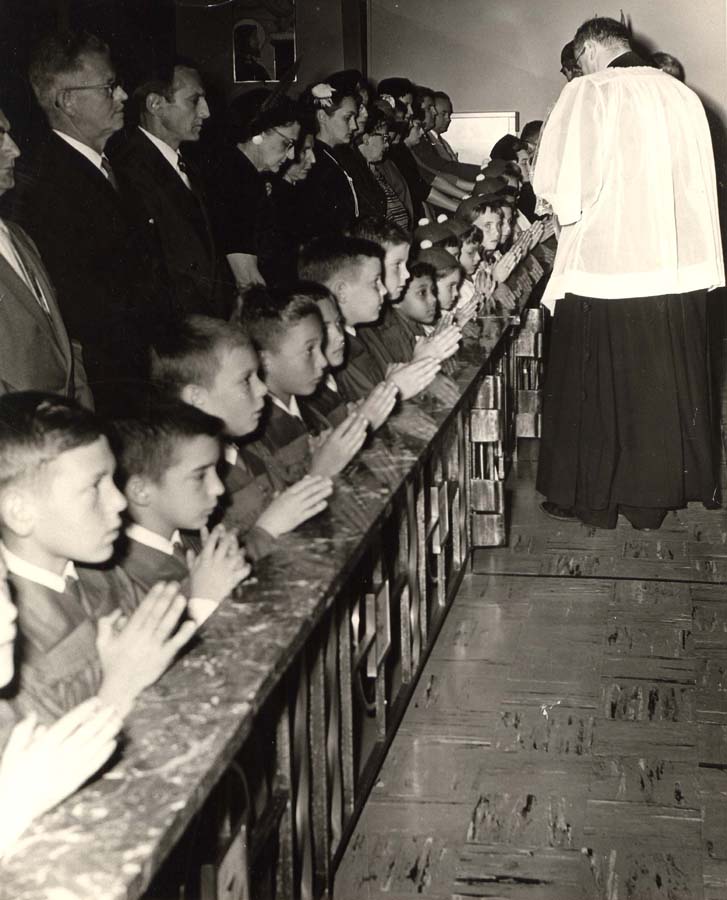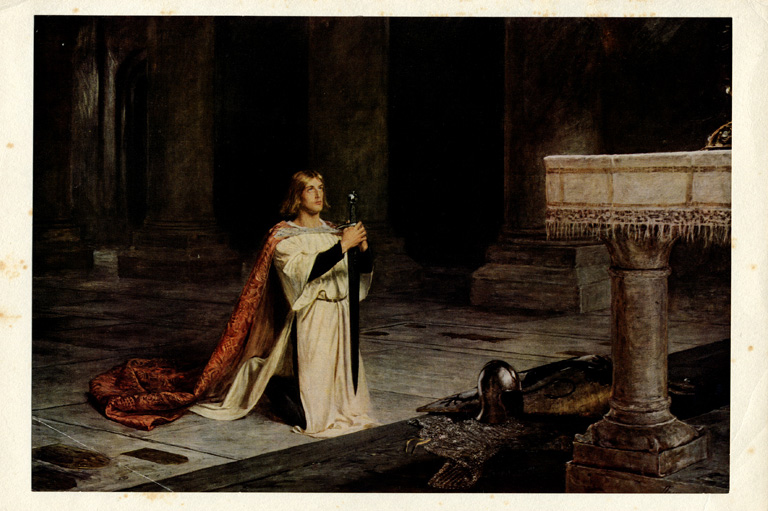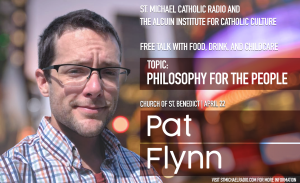Why do Catholics kneel during Mass?

Original content from our friend Ken Henderson’s website:
pintpipeandcrossclub.wordpress.com
Please visit his website to learn how to start your own Pint, Pipes, and Cross Club!
Why do Catholics kneel during Mass?

Why do Catholics kneel during Mass? We kneel because we are in the presence of God. Kneeling is a very meaningful and intimate gesture, and it expresses adoration and shows our reverence towards Him.
We live in a society today that in many ways has lost reverence for things which are holy and sacred. We approach God in a way that is casual, almost as if He is on the same level as us. This lack of reverence can reflect a lack of humility. When we kneel we remind ourselves that we are not God and we are not in charge; rather, we are only creatures before our Lord.
Several points of this reflection on kneeling are drawn from Joseph Cardinal Ratzinger’s, The Spirit of the Liturgy.
Kneeling does not come from any culture, contrary to those who claim that kneeling is the product of western culture. It comes from the bible itself and its knowledge of God. Kneeling occurs many times in the Old Testament and New Testament. The Greek word for kneeling, “proskynein,” occurs fifty-nine times in the New Testament, twenty-four of which are in the book of Revelation, the book of the heavenly liturgy, from which the Church takes as her standard for her own liturgy.
One of the most significant moments in Jesus’ life on earth occurs in the garden of Gethsemane on the Mount of Olives. Jesus’ agony in the garden follows the institution of the Lord’s Supper with his Apostles. In the Gospel of St. Luke Jesus prayed in the garden on his knees, signifying the moment that he truly enters his passion. In this gesture Jesus takes upon himself the fall of man, who is brought low by his sins. In this place of human anguish Jesus cries out to his Father that the cup of suffering might be taken from him; ultimately Jesus surrenders his will to the will of the Father: “Not my will but yours be done.” He lays the human will in the divine. He takes up all the hesitation of the human will and endures it. Herein resides the very heart of our redemption. Jesus as the new Adam is tempted in the garden to reject God, just as Adam was tempted in the garden of Eden. Here, however, Jesus as the New Adam, surrenders his will and obeys the will of his Father, thus beginning the full redemption of what was lost by Adam’s sin.
There is no other way for us to find salvation apart from following Jesus by surrendering our own will into the will of the Father. Hence our kneeling at Mass, which occurs during the Eucharistic Prayer and after the Lamb of God, and optionally after receiving Holy Communion, expresses the humility of Jesus before the Father’s will. As we receive Holy Communion, then, prayers of thanksgiving should include a surrendering of our own will into the Father’s will, just as Jesus teaches us in the Our Father prayer.
The Greek word for kneeling “proskynein” is related to the Latin word “prostratio,” a word that we translate, “prostration.” Prostration is a form of kneeling. Prostration occurs twice in our liturgical celebrations: on Good Friday and at ordinations. On Good Friday prostration by the priest before the altar and cross expresses our sense of shock that by our sins we share in the responsibility for the death of Christ; the people kneel during this prostration to share in this shock. This is who we are: fallen creatures whom only the Crucified One can set back on our feet. We fall down before the power of God, just as Moses did before the burning bush, knowing that the full power of God is revealed in the Cross, the true burning bush, the place of the flame of God’s love, which burns but does not destroy.
At ordination the candidates’ prostration comes from the awareness of our absolute incapacity, by our own powers, to take on the priestly mission of Jesus Christ, to speak and act in his person. While the ordinands are lying on the floor the whole congregation sings the Litany of the Saints. The saints are living testimony of the power of God’s love revealed in the Cross of Jesus Christ. Calling upon the help of the Saints helps the ordinand to accept the mission of Jesus Christ.
Finally, kneeling also expresses adoration and reverence to our Lord. Kneeling expresses humility and vulnerability. Only the humble and vulnerable before God can receive His grace and mercy. Kneeling bodily expresses this truth.
Kneeling in God’s presence during Mass emphasizes the Real Presence of Christ in the Eucharist, and how much we love and adore our King. St. Paul says, “that at the name of Jesus every knee should bow, in heaven and on earth and under the earth” (Philippians 2:10).
So kneeling in prayer is scriptural. In Ephesians 3:14 Paul says, “I kneel before the Father,” and in Acts 9:40 Peter “knelt down and prayed.” The Catholic habit of kneeling is consistent with Scripture and is another manifestation of the continuity between the Church of the first century and the Catholic Church of today.
Like St. Paul, we get down on our knees during Mass and humbly adore Him.

